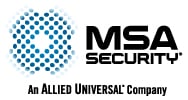The three R’s: Review, Refine, Remind. These three words are crucial to ensuring your workplace is protected from anything and everything.
Over the past year, we have seen civil unrest move to the forefront of the security threat landscape. In late May of 2020, protests became increasingly more common across the nation largely in response to the murder of George Floyd, causing concern for workplace security. Now in late April 2021, the jury has reached a verdict in the Chauvin trial and the country remains braced for potential civil unrest pending the verdict. Once a verdict is announced, the public reaction will be immediate. This verdict may likely result in protests, riots, and violence. Law enforcement agencies across the country have been preparing for potential unrest surrounding this trial for months.
Businesses must be prepared with strategies, protocols, and tactics to mitigate potential disruption and harm to personnel and property. Advanced preparation, notification protocols, and contingency plans are key to maintaining safety and security in the workplace.
Review: Businesses should act immediately to prepare for spontaneous unrest by identifying and mitigating outstanding vulnerabilities.
- Penetration Testing. Conduct, or review, existing penetration tests to identify areas of vulnerability. Reinforce security in those areas to prevent potential access or damage by hostile actors.
- Open-source Intelligence Monitoring. Conduct professional open-source
intelligence monitoring on a 24/7 basis to identify flashpoints, protests, violence, and potential escalating unrest as early as possible. A customized social media monitoring program can allow organizations to identify planned or spontaneous unrest in the immediate area.
Contact info@msasecurity.net to learn about MSA’s weekly protest notification service
- Shelter-in-place Protocols. Review shelter-in-place policies and protocols to protect personnel in the event a protest, riot, or other disturbance occurs in the immediate vicinity. Determine activation policies, facility lockdown protocols, whether and where to move personnel, and recovery policies.
Refine: Establish clear and efficient contingency plans for all personnel, both on-site and beyond. Institute plans and protocols to rapidly and effectively communicate with your workforce at all hours.
- Deploy Overt and Covert Security. Deploy trained security professionals, both overt and covert, with experience in de-escalation, crowd control, access control, counter-surveillance, and incident response. An overt show of force serves to deter agitators from disorderly behavior, while protecting personnel. A covert deployment with personnel trained in counter-surveillance can facilitate detection of any pre-operational surveillance of building vulnerabilities and allow security teams to identify potential gaps or risks.
- Establish Relationships with Local First Responders. In the event of widespread civil unrest, law enforcement resources may become strained and response times may be longer than usual. Establish relationships with local first responders in advance, so they are cognizant of your organization’s unique security concerns and can respond as quickly and efficiently as possible. Anticipate potential delays in response and establish contingency plans for any unrest that may occur on or around your facility. Law enforcement agencies can provide information on upcoming events in your vicinity.
- Notification Protocols. Establish multi-channel notification protocols to inform personnel of impending or existing unrest near the workplace area. Emails, text messages, and automated messages are recommended as the fastest method of communication. Prepare a script or checklist in advance identifying key pieces of information that need to be shared with personnel.
- Executive Protection. Develop customized protection plans for executives and other high-profile personnel who could potentially be targets of unrest. Protection plans should include designated security personnel and evacuation protocols that avoid potential identification or exposure. Plans should mitigate unique vulnerabilities faced by the principal.
- Contingency Plans for Extended Unrest. Ensure your plans address scenarios of prolonged unrest. Establish work from home policies where applicable and offer resources to personnel so they can complete their responsibilities from a safe location whenever necessary. Activate these contingency plans at the earliest signs of potential unrest.
Remind: Rapid communication to employees and awareness of evolving situations will be key to an effective response.
- Guidance for Personnel. Train your employees on the building security procedures in place so they can respond properly should protests, riots, or general unrest occur near the workplace. Offer additional resources on how to manage potential citywide unrest near their homes. Training might cover topics such as avoiding crowds, establishing distance from agitators, seeking refuge in nearby buildings, and more. Advise personnel on steps to take should they inadvertently become caught up in a spontaneous demonstration.
- Ingress & Egress Contingencies. Recap your company’s contingency plans that enable personnel to enter and exit the workplace using secondary locations, such as back doors or loading docks. This allows personnel to avoid potential areas of disruption, of particular importance for businesses located near parks, landmarks, or other areas of congregation.
As more high-profile news stories emerge surrounding officer-involved shootings, the security landscape grows increasingly volatile.
Learn More about MSA Security's Protective Services Solutions.

